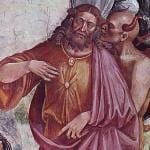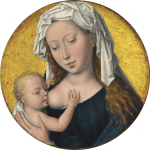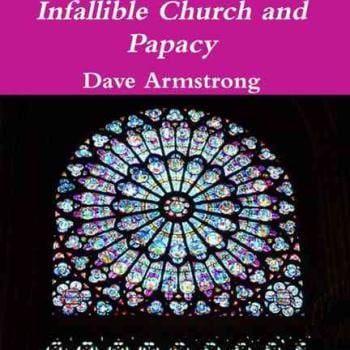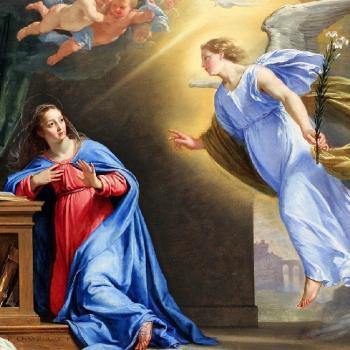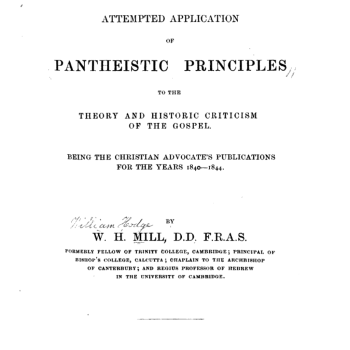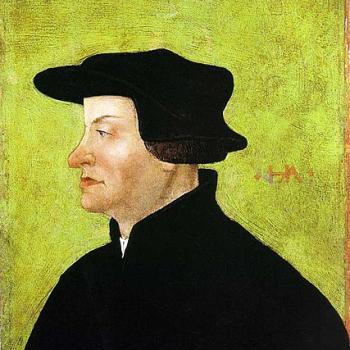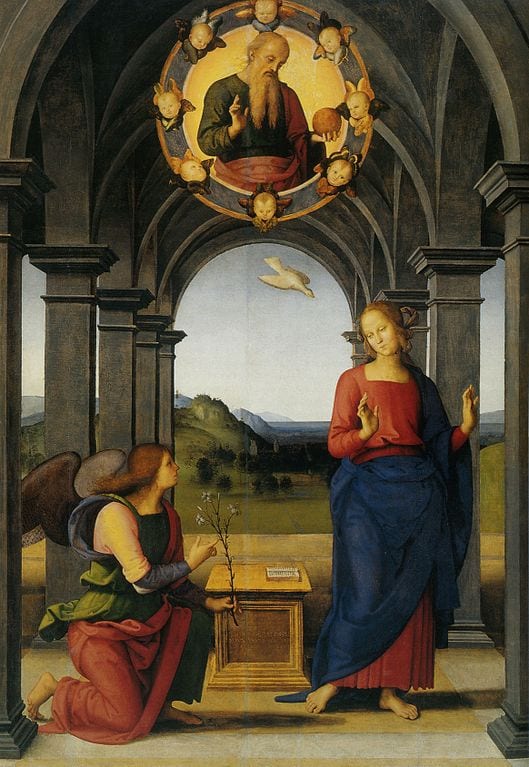
Pope Francis has a very strong devotion to the Blessed Virgin Mary, truth be told. Several articles have documented this (one / two / three / four / five). Here is the documentation:
Feast Days and Marian Devotions
In 2018 he established a new feast day for Mary “Mother of the Church” which will now be celebrated on the Monday after Pentecost. In October 2019 he also added the feast of Our Lady of Loreto to the liturgical calendar (December 10th).
Furthermore, he has a special devotion to the Blessed Virgin Mary, Untier of Knots, and has promoted this relatively obscure devotion. It grew particularly as a result of a painting in Bavaria around 1700 by Johann Georg Schmidtner, but was based on a statement from St. Irenaeus (c. 130-c. 202): “the knot of Eve’s disobedience was loosed by the obedience of Mary. For what the virgin Eve had bound fast through unbelief, this did the virgin Mary set free through faith” (Against Heresies, III: 22).
Devotion to Mary is not spiritual etiquette; it is a requirement of the Christian life. The gift of the Mother, the gift of every mother and every woman, is most precious for the Church, for she too is mother and woman. If our faith is not to be reduced merely to an idea or a doctrine, all of us need a mother’s heart, one which knows how to keep the tender love of God and to feel the heartbeat of all around us. . . .
For Mary is exactly what God wants us to be, what he wants his Church to be: A Mother who is tender and lowly, poor in material goods and rich in love, free of sin and united to Jesus, keeping God in our hearts and our neighbor in our lives. (1-1-18)
Mary’s Bodily Assumption
Archbishop Carlo Maria Viganò, in his latest declaration of lunacy, claimed that Pope Francis “deserts the solemn celebration of the Assumption . . . with the faithful.” This is a lie; he celebrated it in St. Peter’s Square in 2019, and in a stadium in South Korea in 2014.
At the end of its Constitution on the Church, the Second Vatican Council left us a very beautiful meditation on Mary Most Holy. Let me just recall the words referring to the mystery we celebrate today: “the immaculate Virgin preserved free from all stain of original sin, was taken up body and soul into heavenly glory, when her earthly life was over, and exalted by the Lord as Queen over all things” (no. 59). Then towards the end, there is: “the Mother of Jesus in the glory which she possesses in body and soul in heaven is the image and the beginning of the church as it is to be perfected in the world to come. Likewise, she shines forth on earth, until the day of the Lord shall come” (no. 68). . . .
The Apostle Paul, writing to the Corinthians, insists that being Christian means believing that Christ is truly risen from the dead. Our whole faith is based upon this fundamental truth which is not an idea but an event. Even the mystery of Mary’s Assumption body and soul is fully inscribed in the resurrection of Christ. The Mother’s humanity is “attracted” by the Son in his own passage from death to life. Once and for all, Jesus entered into eternal life with all the humanity he had drawn from Mary; and she, the Mother, who followed him faithfully throughout her life, followed him with her heart, and entered with him into eternal life which we also call heaven, paradise, the Father’s house. (8-15-13)
The Rosary
Archbishop Carlo Maria Viganò, in the same fact-challenged outburst claimed that Pope Francis “deserts . . . the recitation of the Rosary with the faithful.” This, too, is false. The Holy Father did this on, for example, 5-31-14 and has endorsed and recommended the Rosary many many times.
In the Rosary we turn to the Virgin Mary so that she may guide us to an ever closer union with her Son Jesus to bring us into conformity with him, to have his sentiments and to behave like him. Indeed, in the Rosary while we repeat the Hail Mary we meditate on the Mysteries, on the events of Christ’s life, so as to know and love him ever better. The Rosary is an effective means for opening ourselves to God, for it helps us to overcome egotism and to bring peace to hearts, in the family, in society and in the world. (6-21-13)
Prayer with Mary, especially the rosary – but listen carefully: the Rosary. Do you pray the Rosary every day? But I’m not sure you do [the people shout “Yes!”]… Really? Well, prayer with Mary, especially the Rosary, has this “suffering” dimension, that is of struggle, a sustaining prayer in the battle against the evil one and his accomplices. The Rosary also sustains us in the battle. (8-15-13)
Perpetual Virginity of Mary
Archbishop Carlo Maria Viganò also asserted (and apparently not as a joke) that Pope Francis “demolishes the most sacred dogmas, as he did with the Marian dogmas of the Ever-Virgin Mother of God.” How odd, then, that the Holy Father has made reference to “the intercession of the blessed and glorious ever Virgin Mary, most rightly referred to as Theotokos, . . .” (8-15-15). He has referred to her as “Blessed Virgin Mary” or “Virgin Mary” innumerable times.
Mary the Mother of God (Theotokos)
. . . Mary, most rightly referred to as Theotokos, who shines forth as the ideal Mother of Mercy” (8-15-15).
Pray for us, Holy Mother of God! (12-8-16)
She knew the special way in which she would become the Mother of God — the Angel had said so . . . (12-8-18)
With grace–filled gratitude for the gift of mutual understanding manifested during our meeting, let us with hope turn to the Most Holy Mother of God, invoking her with the words of this ancient prayer: “We seek refuge under the protection of your mercy, Holy Mother of God”. May the Blessed Virgin Mary, through her intercession, inspire fraternity in all those who venerate her, so that they may be reunited, in God’s own time, in the peace and harmony of the one people of God, for the glory of the Most Holy and indivisible Trinity! (2-12-16)
May the Virgin Mary, the All-Holy Mother of God and our Mother, accompany you and protect you always with her tender love. (12-21-14)
Let us commend ourselves to Mary, the Mother of God and our Mother, and place ourselves under her protection. Please, don’t forget to pray for me. I now invite you to pray together to the Mother of God. (1-19-18)
Mary’s Immaculate Conception / Immaculate Heart
Immaculate Mother . . . (12-8-18) (12-8-17) (12-8-16) (2-11-18)
We are in need of your immaculate gaze,
To rediscover the ability to look upon persons and things
With respect and awareness,
Without egotistical or hypocritical interests.
We are in need of your immaculate heart,
To love freely,
Without secondary aims but seeking the good of the other,
With simplicity and sincerity, renouncing masks and tricks.
We are in need of your immaculate hands,
To caress with tenderness,
To touch the flesh of Jesus
In our poor, sick, or despised brethren,
To raise up those who have fallen and support those who waver.
We are in need of your immaculate feet,
To go toward those who know not how to make the first step,
To walk on the paths of those who are lost,
To find those who feel alone. (12-8-16)Today the Feast of the Immaculate Conception leads us to contemplate Our Lady who, by unique privilege, was preserved from original sin from the very moment of her conception. Even living in a world marked by sin, she was not touched by it: Mary is our sister in suffering, but not in evil or in sin. Instead, evil was conquered in her even before deflowering her, because God had filled her with grace (cf. Lk 1:28). The Immaculate Conception signifies that Mary is the first one to be saved by the infinite mercy of the Father, which is the first fruit of salvation which God wills to give to every man and woman, in Christ. For this reason the Immaculate One has become the sublime icon of the divine mercy which conquered sin. Today, at the beginning of the Jubilee of Mercy, we want to look to this icon with trusting love and to contemplate her in all her splendour, emulating her faith.
In the Immaculate Conception of Mary we are invited to recognize the dawn of the new world, transformed by the salvific work of the Father and of the Son and of the Holy Spirit. The dawn of the new creation brought about by divine mercy. For this reason the Virgin Mary, never infected by sin and always full of God, is the mother of a new humanity. She is the mother of the recreated world. (12-8-15)
Mary our Mother,
Today the People of God celebrate, they venerate you, the Immaculate, ever preserved from the stain of sin.
Accept the homage I offer you in the name of the Church in Rome and throughout the world.
Knowing that you, our Mother, are totally free from sin is a consolation to us.
Knowing that evil has no power over you fills us with hope and strength in our daily struggle against the threat of the evil one. (12-8-14)
The readings for today’s Solemnity of the Immaculate Conception of the Blessed Virgin Mary present two crucial passages in the history of the relationship between man and God . . . The second crucial passage, recounted today in the Gospel, is when God comes to live among us, becomes man like us. And this was made possible through a great ‘yes’ – that of the sin was the ‘no’; this is the ‘yes’, it is a great ‘yes’ — that of Mary at the moment of the Annunciation. Because of this ‘yes’ Jesus began his journey along the path of humanity; he began it in Mary, spending the first months of life in his mother’s womb: he did not appear as a man, grown and strong, but he followed the journey of a human being. He was made equal to us in every way, except one thing, that ‘no’. Except sin. For this reason, he chose Mary, the only creature without sin, immaculate. In the Gospel, with one word only, she is called “full of grace” (Lk 1:28), that is, filled with grace. It means that, in her, full of grace from the start, there is no space for sin. And when we turn to her, we too recognize this beauty: we invoke her, “full of grace”, without a shadow of evil. (12-8-16)
This second Sunday of Advent falls on the day of the Solemnity of the Immaculate Conception of Mary, and thus our gaze is drawn to the beauty of the Mother of Jesus, our Mother! With great joy the Church contemplates her “full of grace” (Lk 1:28), and starting with these words we salute her together: “Full of grace!” Let us say it three times: “Full of grace!”. Everyone: Full of grace! Full of grace! Full of grace! This is how God saw her from the first moment of his loving design. He saw her as beautiful, full of grace. Our Mother is beautiful! Mary sustains our journey toward Christmas, for she teaches us how to live this Advent Season in expectation of the Lord. For this time of Advent is a time of waiting for the Lord, who will visit us all on the feast, but also, each one, in our own hearts. The Lord is coming! Let us wait for him!
The Gospel of St Luke presents us with Mary, a girl from Nazareth, a small town in Galilee, in the outskirts of the Roman Empire and on the outskirts of Israel as well. A village. Yet the Lord’s gaze rested on her, on this little girl from that distant village, on the one he had chosen to be the mother of his Son. In view of this motherhood, Mary was preserved from original sin, from that fracture in communion with God, with others and with creation, which deeply wounds every human being. But this fracture was healed in advance in the Mother of the One who came to free us from the slavery of sin. The Immaculata was written in God’s design; she is the fruit of God’s love that saves the world. (12-8-13)
May the Immaculate Heart of Mary always be our refuge, our consolation and the path that leads to Christ. (5-14-17)
Marian Apparitions
In Portugal, this wish will bring – God willing – in person, in my now imminent pilgrimage to the Shrine of Fatima, where a hundred years ago the Madonna appeared to the three little shepherds. The encounter with Our Lady was for them an experience of grace that inspired their love for Jesus. As tender and good teacher, Mary introduced the little seers to the intimate knowledge of Trinitarian love and led them to savour God as the most beautiful reality of human existence. I cannot but wish the same to all of you, dear friends. (5-8-17)
Yesterday evening, I returned from my pilgrimage to Fatima — let us greet Our Lady of Fatima . . . At Fatima, the Virgin chose the innocent heart and simplicity of little Francisco, Jacinta and Lucia, as custodians of her message. . . . Let us be guided by the Light which comes from Fatima. (5-14-17)
Welcome to Lourdes for this Third World Day of the Poor.
It is Mary who welcomes us here. She is the Immaculate One!
She appeared to Bernadette, a poor little shepherdess. It is good news for all of us who recognize ourselves as poor and little: God has “hidden these things from the wise and learned and revealed them to little children”. (11-15-19)
Mary Queen of Heaven
And together with Jesus Mary our Mother accompanies us. She is already in the house of the Father, she is the Queen of Heaven and this is how we invoke her during this time; as Jesus is with us, so too she walks with us; she is the Mother of our hope. (6-1-14)
Today, in venerating Mary, Queen of Heaven, . . . (8-15-14)
May the Virgin Mary, Queen of Heaven and Earth, confirm us in the hope of resurrection and help us to make fruitful in good works her Son’s word sown in our hearts. (11-6-16)
Let us invoke the Virgin Mary, Mother of Hope and Queen of Heaven, that she may always keep us alert, listening and expectant, so that we may, already now, be permeated by Christ’s love and take part one day in the unending joy, in the full communion of God. (10-15-14)
Mary Mediatrix and Co-Redemption
Pope Francis has used the pious description “mother of all” with reference to the Blessed Virgin Mary on many other occasions as well:
Mary, the first and most perfect disciple of Jesus, the first and most perfect believer, the model of the pilgrim Church, is the one who opens the way to the Church’s motherhood and constantly sustains her maternal mission to all mankind. Mary’s tactful maternal witness has accompanied the Church from the beginning. She, the Mother of God, is also the Mother of the Church, and through the Church, the mother of all men and women, and of every people. May this gentle and loving Mother obtain for us the Lord’s blessing upon the entire human family. (Homily, 1-1-15)
To grow in tender love, and a respectful and sensitive charity, we have a sure Christian model to contemplate: Mary, the Mother of Jesus and our Mother, who is always attentive to the voice of God and the needs and troubles of her children. Mary, impelled by God’s mercy which took flesh within her, selflessly hastened from Galilee to Judea to find and help her kinswoman Elizabeth. She interceded with her Son at the wedding feast of Cana when she saw that there was a shortage of wine. She bore in her heart, throughout the pilgrimage of her life, the words of the elderly Simeon who foretold that a sword would pierce her soul, and with persevering strength she stood at the foot of the cross of Jesus. She knows the way, and for this reason she is the Mother of all of the sick and suffering. To her we can turn with confidence and filial devotion, certain that she will help us, support us and not abandon us. She is the Mother of the crucified and risen Christ: she stands beside our crosses and she accompanies us on the journey towards the resurrection and the fullness of life. (Message, 12-6-13)
Mary is the Mother of Jesus and is, in Him, the Mother of all of us: the Mother of unity. (Address, 5-10-18)
Blessed are you, Mary, for you gave the Son of God to our world. But even more blessed are you for having believed in him. Full of faith, you conceived Jesus first in your heart and then in your womb, and thus became the Mother of all believers (cf. Saint Augustine, Sermo 215,4). (Homily, 1-1-16)
And at the foot of the Cross of Jesus, we also meet the Sorrowful Mother. She is the Mother of all humanity, and she is always close to her sick and ailing children. If our faith waivers, hers does not. May Mary always sustain you and your commitment to research and action in your work. (Address, 4-12-14)
May Mary, Mother of all people, accompany and protect the missionaries of the Gospel each day. (Angelus, 10-20-19)
May Mary, Mother of the Prince of Peace and Mother of all the peoples of the earth, accompany and sustain us at every step of our journey of reconciliation. (Message for World Day of Peace, 12-8-19)
It will also benefit us this week to think about the joy of Mary, the Mother of Jesus. Just as her pain was intimate enough to pierce her soul, so too her joy was also intimate and deep, and the disciples were able to draw from it. Having passed through the experience of the death and Resurrection of her Son, seen in faith as the supreme expression of God’s love, Mary’s heart became a font of peace, consolation, hope and mercy. All of the prerogatives of our Mother derive from this, from her participation Jesus’ Paschal Mystery. From Friday until Sunday morning she did not lose hope: we contemplated the sorrowful Mother but, at the same time, the Mother full of hope. She, who is the Mother of all of the disciples, the Mother of the Church, is the Mother of hope. (Regina Caeli, 4-21-14)
This phrase was also used by Pope Leo XIII, Ven. Pope Pius XII, Pope St. Paul VI, Pope St. John Paul II, and Pope Benedict XVI, as well (see the references and citations in my previous paper on this topic).
In a remarkable homily delivered on 1 January 2016, Pope Francis stated:
Composed by an unknown author, it has come down to us as a heartfelt prayer spontaneously rising up from the hearts of the faithful: “Hail Mother of mercy, Mother of God, Mother of forgiveness, Mother of hope, Mother of grace and Mother full of holy gladness”. In these few words we find a summary of the faith of generations of men and women who, with their eyes fixed firmly on the icon of the Blessed Virgin, have sought her intercession and consolation. . . .
For us, Mary is an icon of how the Church must offer forgiveness to those who seek it. The Mother of forgiveness teaches the Church that the forgiveness granted on Golgotha knows no limits. Neither the law with its quibbles, nor the wisdom of this world with its distinctions, can hold it back. The Church’s forgiveness must be every bit as broad as that offered by Jesus on the Cross and by Mary at his feet. There is no other way. It is for this purpose that the Holy Spirit made the Apostles the effective ministers of forgiveness, so what was obtained by the death of Jesus may reach all men and women in every age (cf. Jn 20:19-23).
The Marian hymn continues: “Mother of hope and Mother of grace, Mother of holy gladness”. Hope, grace and holy gladness are all sisters: they are the gift of Christ; indeed, they are so many names written on his body. The gift that Mary bestows in offering us Jesus is the forgiveness which renews life, enables us once more to do God’s will and fills us with true happiness. This grace frees the heart to look to the future with the joy born of hope.
Pope Francis also makes numerous references to the “intercession” of Mary. He stated on 9-10-17: “May the Most Blessed Virgin Mary intercede for the world’s needs and for every one of her children.” And on 7-24-13: “We have a Mother who always intercedes for the life of her children.” And on 1-1-18: “She intercedes, aware that as a mother she can, indeed, must, make present to the Son the needs of men, especially the weakest and most disadvantaged.” And on 12-8-15: “Through the intercession of Immaculate Mary, may mercy take possession of our hearts and transform our whole life.”
. . . the role of Our Lady in redemption, a role that so often the so-called ‘modern’ theologies forget. (10-25-19)
[W]e are called to establish a true communion with Jesus . . . May the Virgin Mary help us in this. . . . we invoke her as ‘Mary Gate of Heaven’, a gate that traces the form of Jesus precisely: the door to God’s heart, a demanding heart, but one that is open to us all. (8-25-19)
May the Mother of God, Queen of the Saints and Gate of Heaven, intercede for our journey of holiness and for our loved ones who have gone before us and who have already departed for the heavenly Homeland. (11-1-17)
Let us ask the Immaculate for the grace to live this way. (12-8-18)
“. . . Mother of grace and mercy . . . Grant that we too, especially in trials and in temptation, may fix our gaze on your open hands,
which let the Lord’s grace come down to the earth” (12-8-17)[L]et us invoke Mary Auxiliatrix . . . ” (6-21-15; this term seems to have been used as a synonym of “Mediatrix” in Lumen Gentium, [III, 62].)
And in the struggle which the disciples must confront – all of us, all the disciples of Jesus, we must face this struggle – Mary does not leave them alone: the Mother of Christ and of the Church is always with us. She walks with us always, she is with us. And in a way, Mary shares this dual condition. She has of course already entered, once and for all, into heavenly glory. But this does not mean that she is distant or detached from us; rather Mary accompanies us, struggles with us, sustains Christians in their fight against the forces of evil. . . . Mary also experienced the martyrdom of the Cross: the martyrdom of her heart, the martyrdom of her soul. She lived her Son’s Passion to the depths of her soul. She was fully united to him in his death, and so she was given the gift of resurrection. (8-15-13)
Immaculate Mother,
on the day of your celebration, so dear to the Christian people,
I come to pay you homage in the heart of Rome.
In my soul I carry the faithful of this Church
and all those who live in this city, especially the sick and those who due to various circumstances struggle harder to go on.First and foremost we wish to thank you for the motherly care with which you accompany our journey:
how often we hear those who have experienced your intercession describe with teary eyes
the graces that you request for us from your Son Jesus!
I also think of an ordinary grace that you give to the people who live in Rome:
that of patiently facing the discomforts of daily life.
For this we ask you for the strength not to give in, but rather, to each do our part each day to improve things,
so that each one’s care may make Rome more beautiful and livable for every one;
so that each one’s duty properly fulfilled may ensure the rights of every one.
And thinking of the common good of this city,
we pray to you for those who play roles of great responsibility: may you obtain for them wisdom, foresight, the spirit of service and cooperation. (12-8-18)But in this struggle we are not alone, we are not orphans, for Jesus, before dying on the Cross, gave you to us as our Mother.
Though we are sinners, we are still your children, the children of the Immaculate, called to that holiness that has shown resplendent in you by the grace of God from the beginning.
Inspired by this hope, today we invoke your motherly protection for us, our families, this city and the world.
Through your intercession, may the power of God’s love that preserved you from original sin, free humanity from every form of spiritual and material slavery and make God’s plan of salvation victorious in hearts and in history.
May grace prevail over pride in us, too, your children.
May we become merciful as our heavenly Father is merciful. (12-8-14)
At Fatima, I immersed myself in the prayer of the Holy faithful people, a prayer that has been flowing there like a river for the past 100 years, to implore Mary’s motherly protection over the entire world. (5-14-17)
Mary took the risk and for this reason she is strong, for this reason she is an “influencer”, the “influencer” of God! (1-26-19)
Mary’s “yes”, already perfect from the start, grew until the hour of the Cross. There her motherhood opened to embrace every one of us, our lives, so as to guide us to her Son. (10-23-13)
We owe so much to this Mother! She is present at every moment in the history of salvation, and in her we see a firm witness to hope. (11-21-13)
On the first day of the year, we celebrate this nuptial union between God and mankind, inaugurated in the womb of a woman. In God, there will forever be our humanity and Mary will forever be the Mother of God. She is both woman and mother: this is what is essential. From her, a woman, salvation came forth and thus there is no salvation without a woman. In her, God was united to us, and if we want to unite ourselves to him, we must take the same path: through Mary, woman and mother. That is why we begin the year by celebrating Our Lady, the woman who wove the humanity of God. If we want to weave humanity into this our time, we need to start again from the woman. . . .
Humanity’s salvation came forth from the body of a woman . . .
In drawing close to Mary, the Church discovers herself, she finds her centre and her unity. The enemy of our human nature, the devil, seeks instead to divide, to highlight differences, ideologies, partisan thinking and parties. But we do not understand the Church if we regard her by starting with structures, programmes and trends, ideologies and functions. We may grasp something, but not the heart of the Church. Because the Church has a mother’s heart. And we, as her sons and daughters, invoke today the Mother of God, who gathers us together as a people of believers. O Mother, give birth to hope within us and bring us unity. Woman of salvation, to you we entrust this year. Keep it in your heart. We acclaim you, the Holy Mother of God. All together now, for three times, let us stand and acclaim the Lady, the Holy Mother of God. [with the assembly] Holy Mother of God, Holy Mother of God, Holy Mother of God! (Homily, 1-1-20)
And also the Mother of God, who under the Cross is the Sorrowful Mother, about to extend her maternity to all people. The Mother of God is the Mother of the Church and her maternal tenderness reaches all people. (Homily for the vespers for the Solemnity of Mary Mother of God, 1-1-20)
*
Related Reading:
Pope Francis and Mary Co-Redemptrix (Robert Fastiggi, Where Peter Is, 12-27-19)
Pope Francis and the coredemptive role of Mary, the “Woman of salvation” (Mark Miravalle & Robert Fastiggi, La Stampa, 1-8-20)
***
***
Photo credit: The Annunciation (c. 1489), by Pietro Perugino (1448-1523) [public domain / Wikimedia Commons]
***


